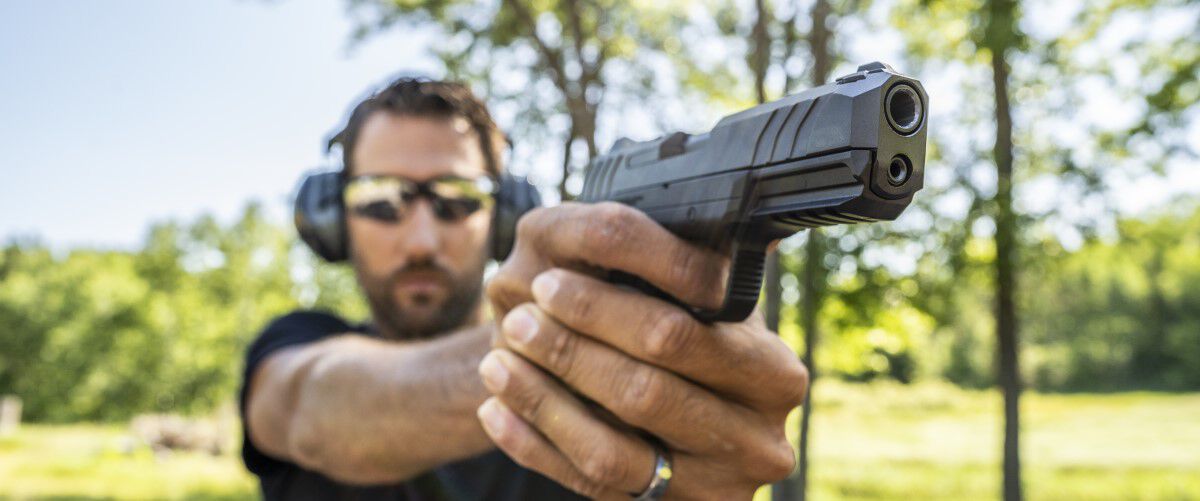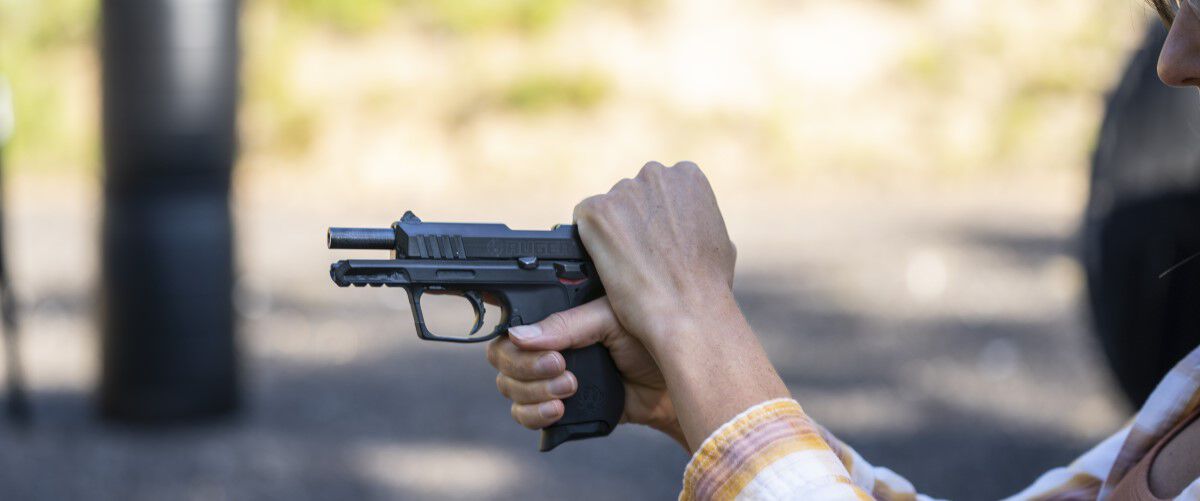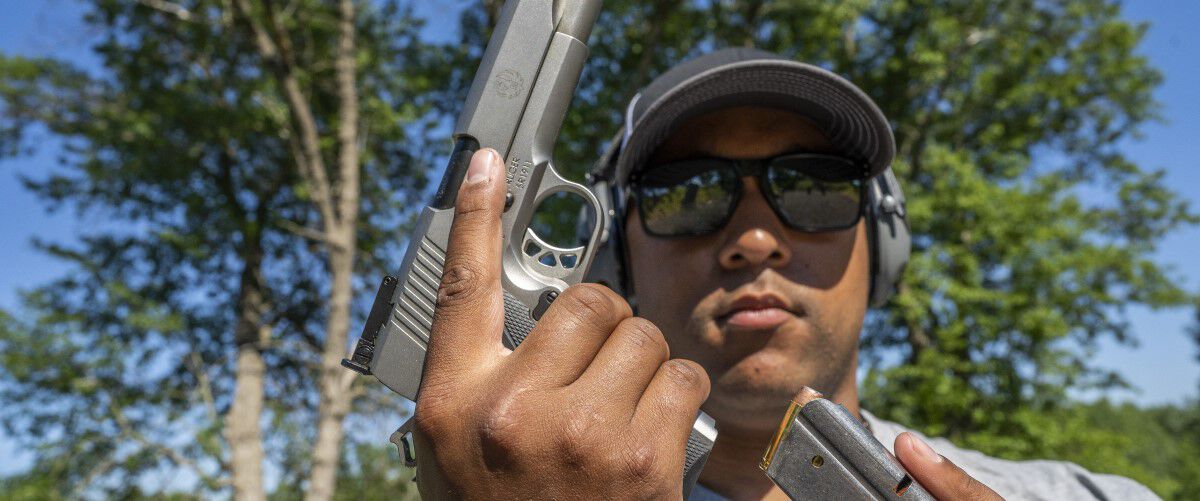Real-World Defensive Stances

The isosceles stance goes with handgun shooting like Michael Jordan goes with basketball. You can’t have one without the other. The stance is a two-handed technique. The feet align with one another—usually shoulder-width apart—and the dominant hand grips the handgun while the non-dominant (support) hand wraps around the dominant hand. A firm grip is created, and it provides an excellent base. It should be practiced often. However, in a real self-defense situation, getting to this stance may not be possible.
Self-defense expert, Jim Gilliland, is a master shooter and has been in plenty of combat situations through his military career. He shares some excellent advice for shooters to broaden their self-defense horizons and be ready to fight from any body position.
Shield Yourself
“Cover is key,” Gilliland says. “The goal is for you to eliminate the threat and not get shot in the process. Develop a home plan. Know where couches and chairs are. Take note of walls that will allow you to show as little of yourself as possible. With the chamber and magazine cleared and the gun set to safe, simulate fighting from different body positions behind cover in your home."
In addition to practicing these simulations, he notes the importance of knowing what cover in your home provides the best concealment and where you can fight from based on where the threat is in your home. The more you plan and practice, the better you will be.

“Concealment is key,” he says. “You don’t want to expose yourself to the threat if you don’t have to. While a couch or chair may not stop a bullet, these objects do provide concealment and may allow you to take down the threat without them ever knowing you’re there. You don't want to be standing upright in your home to address a threat in the open. You want cover, and you need to know how to fight from cover, and this means being able to make shots from different body positions.”
Carry Situations
Outside the home, Gilliland preaches awareness. Pay attention when you’re in a store, restaurant, movie theatre, parking garage and so on. Knowing what you'll do ahead of time can be the difference between life and death if something goes awry.
“Both home defense and defense when out in public are great reasons to practice different shooting positions on the range,” he says. "If bullets are flying and you’re moving for cover—which you should be since a moving target is harder to hit—you don’t want to stop and square up in the isosceles. You need to be able to fire on the move, and this can only be accomplished through repetitive drilling.”

Most ranges today have barricades you can fire behind. During your time on the range, practice firing from your knees, a single knee, butt and prone. You never know what position you might have to fight from. The more familiar you get with firing from cover while from a body position other than standing, the better. If cover is sparse, but you can move to what's available, drop prone and deliver a lethal shot, you’re a step ahead of the game. Once you obtain cover, the goal is to get a solid grip on the handgun, acquire the target, and press the trigger rapidly. This doesn’t mean aimlessly spraying bullets. During practice, press the trigger rapidly while keeping the muzzle set on the target.
Both Hands
“In addition to being able to fight from different body positions, you need to practice shooting with only your left and right hand,” Gilliland says. “You don’t want a weak hand. When you’re on the move, you need to be able to control the firearm with one hand and put rounds where they need to go. This is easier said than done, and the movies make it look too easy. Don’t expect to be as accurate as you are when you have the proper stance and grip. A moving target is harder to hit, and a moving and shooting target requires the threat to adjust. The threat will need to find cover, or if the threat has cover, firing will cause them to use it, which won’t make them nearly as accurate.”